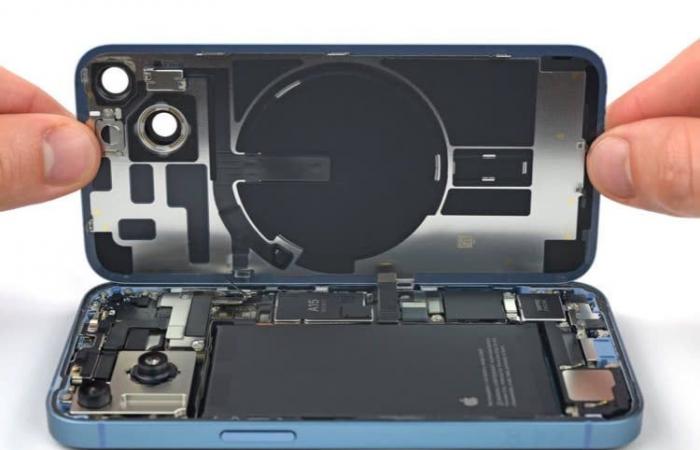In a white paper, Apple defends its approach to product design. She wants them to be durable and easy to repair… when justifiedAt the same time as it announced yesterday an extension to Europe of access to its diagnostic tools by individuals, Apple published a document entitled ” Longevity, by Design » or how the sustainability of its products is the result of a carefully considered approach. With what can sometimes seem like compromises, but that Apple explains.
« Designing for the long term is a company-wide effort, informing our early decisions well before the first prototype is manufactured and guided by historical customer usage data and predictions about future usage “, explains Apple in the introduction, adding: “ This requires striking a balance between durability and repairability without compromising safety, security and privacy ».
This translates into products that retain their value longer than their competitors, the argument continues, Apple devices are more readily passed from hand to hand over their life cycle. In the United States and Europe, the iPhone is said to retain at least 40% of its value compared to Androids, and this gap increases with the age of the devices. The 2016 iPhone 7 is cited as a model that is still trading in the United States (in France too, but this remains anecdotal for Apple, which takes back a 7 Plus for €50 while it can be found reconditioned for twice as much, editor’s note). In fact, hundreds of millions of iPhones that are in use are more than 5 years old, Apple insists.
Over the generations, their resistance has increased, the document underlines, with a consequent decrease in repair volumes. Statistics are put forward: -38% fewer out-of-warranty repairs between 2015 and 2022 on Apple products in general and -44% on phones. For iPhone, overall accidental damage repairs have decreased by 44% since the introduction of improved chassis with iPhone 7 “. Water resistance on this generation has reduced repairs linked to these incidents by 75%.
Fewer interventions and customers who visit after-sales service less often lead Apple to say that the end sometimes justifies the means:
Although these changes required the addition of adhesives and sealants that made repairs more complex, the remarkable improvements in product longevity justified a slight increase in repair complexity.
Further, Apple illustrates the evolution of the repairability of its iPhones. The worst being the first model whose only interchangeable element was the SIM drawer. With the iPhone 15, twelve more or less crucial parts can be changed. We saw this recently with the iPhone 15 Pro which adopted a principle from the iPhone 14 where the rear glass part can be removed without having to remove everything in front first. And a bill halved compared to the iPhone 12 and 13 for the same operation.
Another argument that a phone should be designed so that all parts can be replaced is contested. Sometimes, prioritizing sustainability is a factor in reducing carbon emissions “, says Apple. What she demonstrates by the example of a part that is unlikely to break down:
The iPhone’s charging port is part of a long-lasting module that includes microphones and other components that can be repaired as a whole but rarely need replacing. Making the charging port individually replaceable would require additional components, including its own flexible circuit board, connector, and fasteners that increase the carbon emissions required to manufacture each device.
Conversely, the battery and screen are much more frequently subject to repair and require design effort. Charging port with its intervention rate of less than 0.1% would therefore not need such attention.
Apple also defends the principle of serialization to ensure that spare parts used meet sufficient quality levels and that certain interventions – with Touch ID or Face ID components – are without risk to customer data. Apple also includes two other statistics for 2015 to 2022: “ Warranty and out-of-warranty repair rates decreased by 78% and 38%, respectively ”, reflecting an increase in product reliability. As far as it is concerned, Apple says it only takes care of a third of the interventions carried out outside of warranty, thereby proving that third-party repairers take the lion’s share.
Apple opens its iPhones to repairs with used parts
The length of software support on iPhone, iPad and Mac is also mentioned. The three latest systems are installed on 7-year-old devices. It can go further, as we saw this year with iPhones launched 9 years ago that were updated (the 6s, 7 and SE). But these were security patches and officially Apple still sticks to 5 years. Google and Samsung have been promising 7 years of major and minor updates for their recent smartphones for relatively little time.






